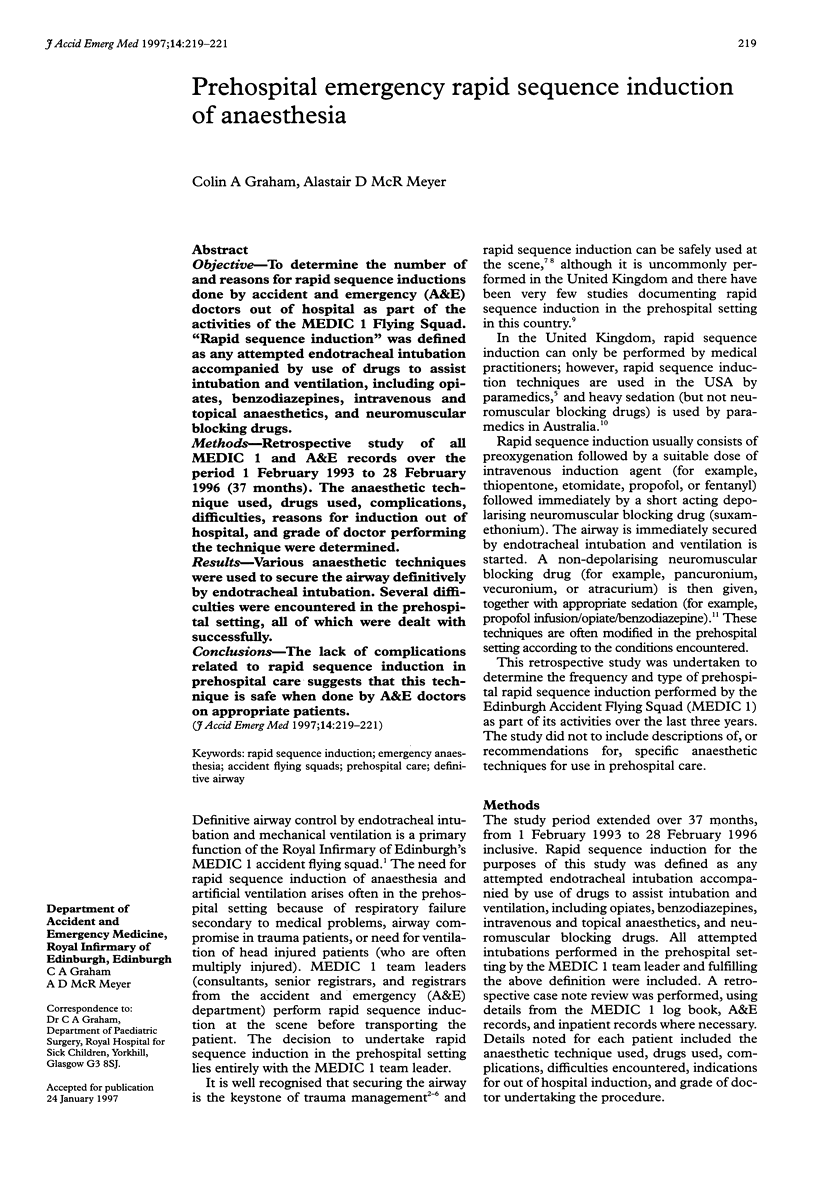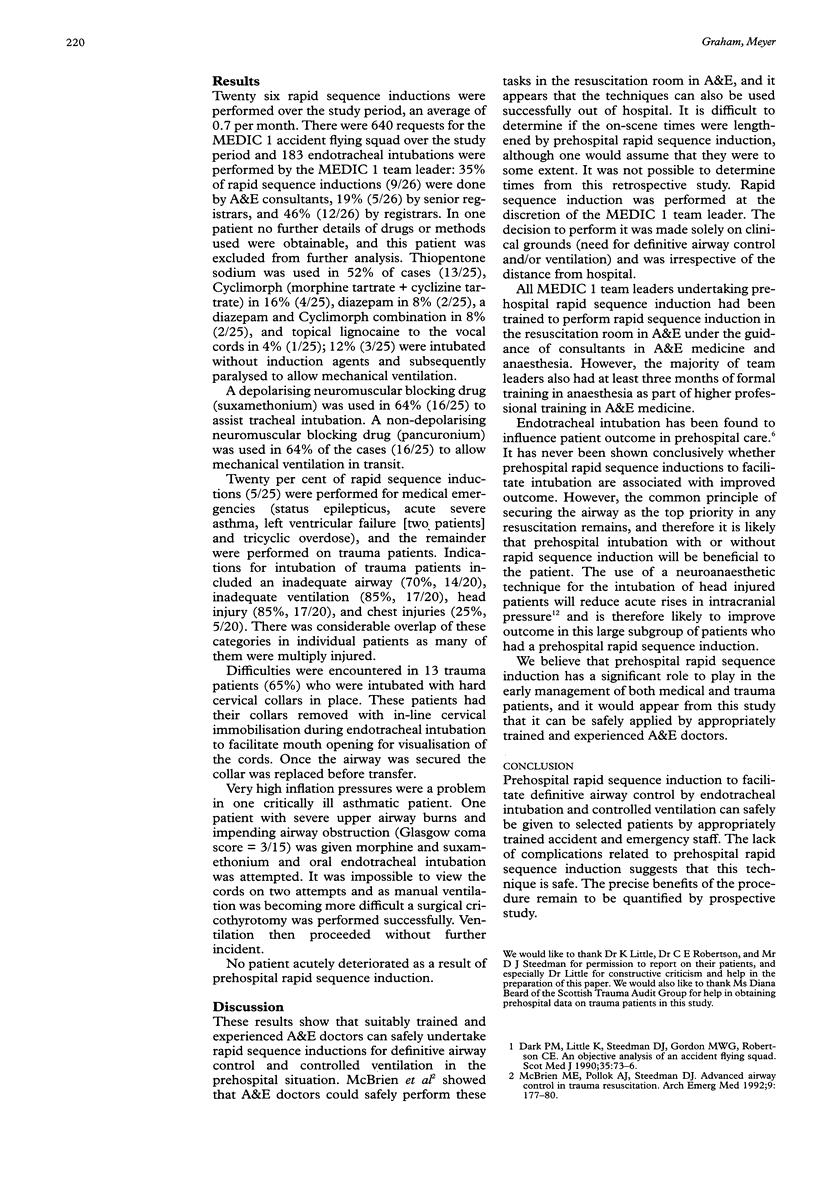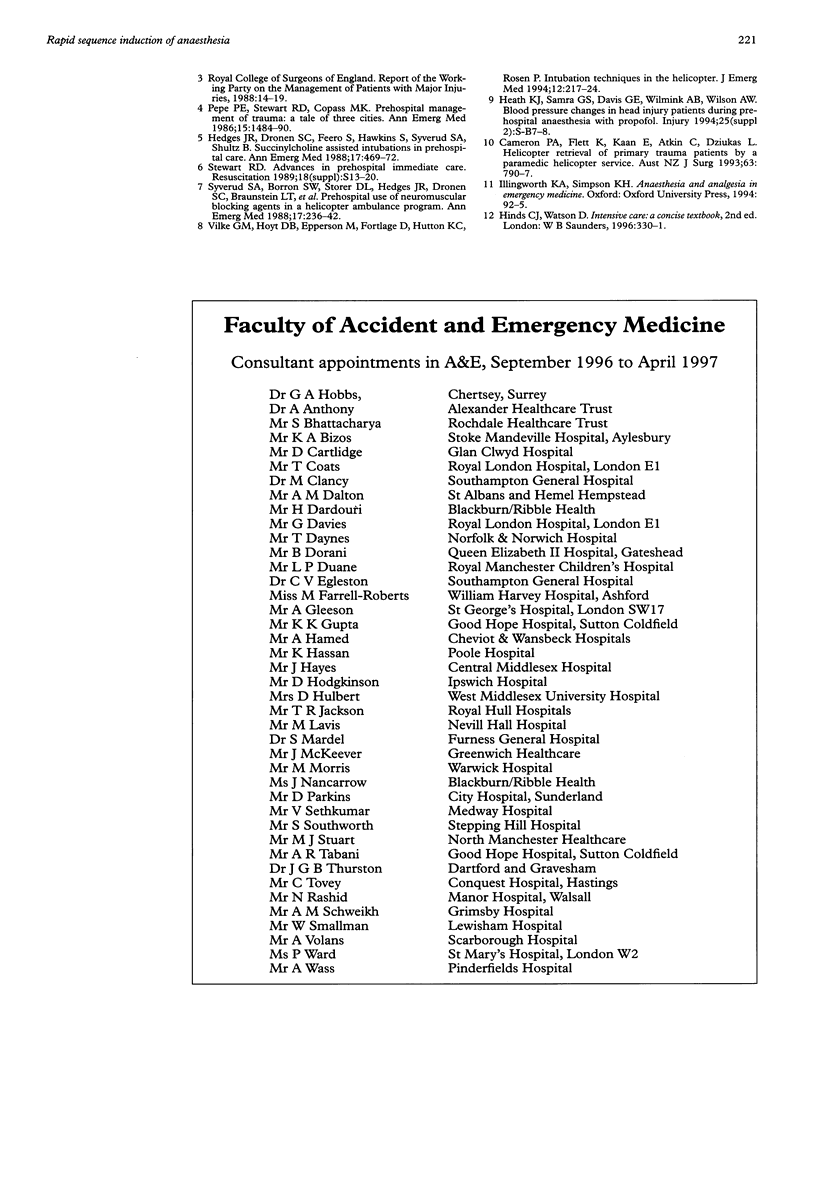Abstract
OBJECTIVE: To determine the number of and reasons for rapid sequence inductions done by accident and emergency (A&E) doctors out of hospital as part of the activities of the MEDIC 1 Flying Squad. "Rapid sequence induction" was defined as any attempted endotracheal intubation accompanied by use of drugs to assist intubation and ventilation, including opiates, benzodiazepines, intravenous and topical anaesthetics, and neuromuscular blocking drugs. METHODS: Retrospective study of all MEDIC 1 and A&E records over the period 1 February 1993 to 28 February 1996 (37 months). The anaesthetic technique used, drugs used, complications, difficulties, reasons for induction out of hospital, and grade of doctor performing the technique were determined. RESULTS: Various anaesthetic techniques were used to secure the airway definitively by endotracheal intubation. Several difficulties were encountered in the prehospital setting, all of which were dealt with successfully. CONCLUSIONS: The lack of complications related to rapid sequence induction in prehospital care suggests that this technique is safe when done by A&E doctors on appropriate patients.
Full text
PDF


Selected References
These references are in PubMed. This may not be the complete list of references from this article.
- Cameron P. A., Flett K., Kaan E., Atkin C., Dziukas L. Helicopter retrieval of primary trauma patients by a paramedic helicopter service. Aust N Z J Surg. 1993 Oct;63(10):790–797. doi: 10.1111/j.1445-2197.1993.tb00342.x. [DOI] [PubMed] [Google Scholar]
- Dark P. M., Little K., Steedman D. J., Gordon M. W., Robertson C. E. An objective analysis of an accident flying squad. Scott Med J. 1990 Jun;35(3):73–76. doi: 10.1177/003693309003500304. [DOI] [PubMed] [Google Scholar]
- Hedges J. R., Dronen S. C., Feero S., Hawkins S., Syverud S. A., Shultz B. Succinylcholine-assisted intubations in prehospital care. Ann Emerg Med. 1988 May;17(5):469–472. doi: 10.1016/s0196-0644(88)80238-5. [DOI] [PubMed] [Google Scholar]
- Pepe P. E., Stewart R. D., Copass M. K. Prehospital management of trauma: a tale of three cities. Ann Emerg Med. 1986 Dec;15(12):1484–1490. doi: 10.1016/s0196-0644(86)80949-0. [DOI] [PubMed] [Google Scholar]
- Syverud S. A., Borron S. W., Storer D. L., Hedges J. R., Dronen S. C., Braunstein L. T., Hubbard B. J. Prehospital use of neuromuscular blocking agents in a helicopter ambulance program. Ann Emerg Med. 1988 Mar;17(3):236–242. doi: 10.1016/s0196-0644(88)80114-8. [DOI] [PubMed] [Google Scholar]
- Vilke G. M., Hoyt D. B., Epperson M., Fortlage D., Hutton K. C., Rosen P. Intubation techniques in the helicopter. J Emerg Med. 1994 Mar-Apr;12(2):217–224. doi: 10.1016/0736-4679(94)90702-1. [DOI] [PubMed] [Google Scholar]


